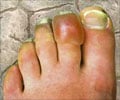About
Winter can be potentially harmful if you expose yourself excessively to cold weather, especially while travelling.
Cold weather injuries are common especially when exposed to the cold winds or when a person has to spend time in the cold with wet clothing on. Some of the common cold- related problems are hypothermia and injuries such as frost bite. The severity of the injuries is dependent on the temperature and the duration of exposure.
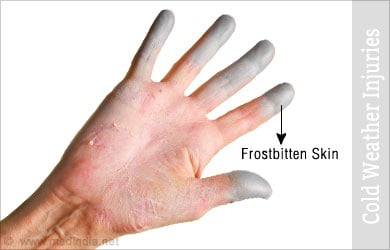
Cold weather-related injuries are of two types - with or without freezing of tissues near the exposed part. The first type of injury includes chillbains, frostnip and trench foot, while the injury with tissue freezing includes frost bite.
Tingling, numbness and change in skin color and texture are the common symptoms of cold-related trauma. Some injuries, such as frost bite, are serious and may require immediate medical help. The person has to be moved to a warm place, wet clothes removed and given medical help as soon as possible. Avoid massaging the areas of injury as this will worsen the condition.
Cold-related injuries may be avoided by careful planning ahead of exposure to cold. Those who are old or very young and those with certain medical conditions such as diabetes, scleroderma or dehydration are more prone to suffer from cold injuries.
Cold-related Injuries without Tissue Freezing
- Chilblains - It is a kind of cold-related injury that can occur in predisposed persons who are exposed to humid weather conditions or to fairly cold conditions. When the area that is exposed to cold is re-warmed after many hours, chillbains occur which manifest as painful itchy reddish or purplish areas, mostly on fingers, toes, ears and nose. In some people, blisters and sores occur. Chilblains last for a few weeks. There is no permanent damage from chilblains and the affected person comes back to normal after a while. There is usually no recurrence. Providing warmth to the affected person is pivotal in the management of chilblains. Lotions and corticosteroid creams may also prove to be useful in some cases.
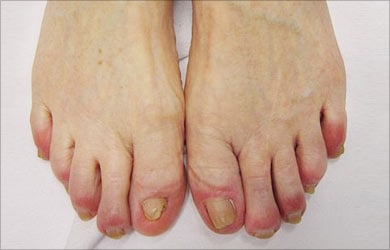
- Trench foot - It is named after a condition seen in military men and is more serious than chilblains. Trench foot does not require severe cold to manifest itself. It can even occur when the temperature is 15 degree F. Tight- fitting or ill-fitting boots aggravate the condition. Pain, itchiness, blotchiness, numbness, swelling and red-color on the foot are the typical symptoms. If the condition becomes severe, gangrene can develop requiring amputation. The first step in managing trench foot is to have the wet shoes removed and for the foot to be kept raised and cleaned well before it is air dried. It is better to take the person to a medical facility at the earliest. On the other hand, uncomplicated trench foot can take several weeks to recover.
- Frost nip - It is a mild weather-related injury that affects face, ears, fingers and toes. Exposure to cold causes burning sensation, itching, numbness and pain. Warming helps to restore normalcy and there is no danger of permanent damage. The affected leg must be kept immersed in a tub of warm water. A wet warm pack may be applied to other affected body parts. This must be a slow gradual process as the body must not be warmed suddenly.
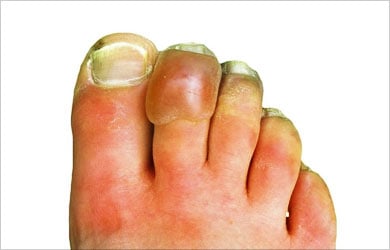
Cold Injuries with Tissue Freezing
- Frost Bite - This injury involves freezing of body tissues, which can lead to serious complications. Frostbite commonly affects face, cheeks, ears, nose, hands and feet. Frost bite occur due to decreased warmth and restricted blood flow to the affected area leading to ice crystal formation within body tissues, leading to death. The tissues in the areas that are frost bitten, and exposed to cold for long, experience vascular damage and metabolic abnormalities when re-warmed. Frost bites can be superficial or deep depending on the duration of exposure. Burning sensation, pain, tingling, numbness, pale skin and blisters are some of the signs of frostbite. A victim of frostbite has to be shifted to the hospital at the earliest. It is better to wrap the affected area with sterile bandage in order not to cause further harm.
Prevention
The prevention of cold weather-related injuries can be brought about in the following way:
- Travel with another person, just in case of emergency.
- Ensure that you carry an emergency kit, blankets etc.
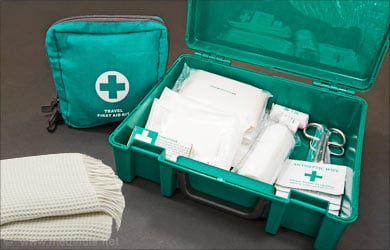
- Wear warm clothes and cover exposed areas if you are travelling in cold weather.
- Avoid tight-fitting clothes in the cold. Carry extra sets of clothes, in case you get wet.
- Use waterproof shoes.
- Drink lots of water and avoid alcohol.

- Avoid smoking.
- In case of discomfort due to cold stay warm / indoors.





